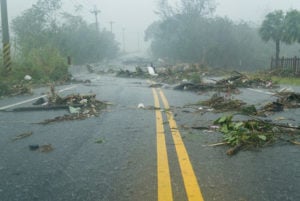
Driving in even the best of conditions can be hazardous, but when inclement weather enters the picture, being on the road can be downright treacherous. Those of us living in the Southeast know all too well how hurricane weather can affect all areas of life, especially attempts at transportation. Not only do strong winds and heavy rains make visibility poor, streets can be slippery or flooded, making controlling a vehicle infinitely more difficult. In evacuation situations, many other cars may also be on the road at the same time, increasing the odds of being involved in a collision.
Recently, as Hurricane Matthew made its way further inland, eight people, including five children and a K-9 officer from the Miami-Dade Police Department, were injured in a collision in Miami. The police officer was responding to a call with lights and sirens when he collided with an Audi A4 containing three adults and five children. Police reports indicated that lights at the intersection were off because of a power outage due to Hurricane Matthew. The officer, all of the children, and the other driver were taken to the hospital, several in critical condition.
How to Drive In a Hurricane
In almost all cases, staying off the road is the best plan, but that may not always be possible. Sometimes driving is the only way to protect yourself and your family. If you do need to drive, consider the following safety tips from the Florida Highway Patrol for different obstacles you may encounter.
Driving in Windy Conditions
Slow down! Windy conditions affect all vehicles on the road, and strong gusts can blow cars, motorcycles, and bicycles off course. Winds may also change direction and intensity, making it even more difficult to maintain control. Driving much slower than normal can help you stay on course.
Driving Through Standing Water
Never drive through flooded areas, period. Even if you are familiar with the roads, standing water may be concealing hazards like debris or power lines. The water may also be significantly deeper than it appears, and your car may not be able to make it through. Your best bet is to avoid entering the water at all.
Driving When Traffic Lights Are Inoperative or Missing
If a police officer is present and directing traffic, follow the officer’s instructions. If no officer is present, come to a complete stop at every intersection and be alert to other vehicles or pedestrians. Yield the right-of-way to other vehicles that have entered the intersection from another highway and any vehicles that are approaching so closely as to be immediate hazards. If you approach an intersection at the same time as another vehicle, follow the standard rules of the road: the driver of the vehicle on the left should yield to the vehicle on the right.
Do You Need Legal Help After an Auto Accident?
If you or a loved one is dealing with the aftermath of an auto accident in Central Florida, let experienced lawyer, John Piccin at Piccin & Glynn help. In a hurricane or weather-related accident, it may be confusing to know where to start, but John has handled hundreds of auto accident cases and can answer your questions and negotiate with insurance companies to ensure that you get the support you need. Call John at 352-558-8480 for a free consultation to discuss your case today.
Resource:
nbcmiami.com/news/local/Multiple-Injuries-in-Officer-Involved-Car-Crash-in-Miami-396236801.html

